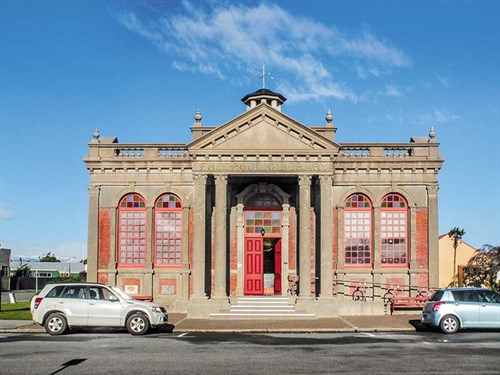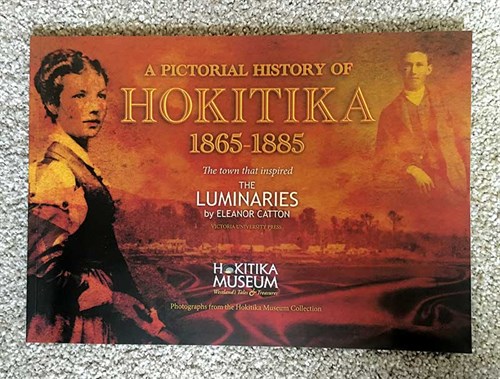The weather was dreary. Heavy clouds wept onto the ranges behind the town and the streets were blurred by a gauze of moisture. It was similar weather when, in 1866, Walter Moody, the fictional fortune seeker introduced in the opening pages of Eleanor Catton’s epic novel, The Luminaries, arrived in Hokitika.

But the similarity ends there. He arrived by barque after a horrible sea voyage; we arrived in 2017, on a sealed road in a modern motorhome. And the town itself, founded two years before Moody’s arrival, would have looked very different from the one we came to explore.
Eleanor Catton’s complex Victorian novel has helped put Hokitika on the itinerary of modern travellers. As much as the narrative, the setting—inspired by 1860’s Hokitika—delves deep into life in a West Coast town of the gold rush era in a way that has never been portrayed before.
Fast forward to the early 1900s, and the town’s time of prosperity is apparent in extravagant and elaborate public buildings, some of which remain. A hundred years later, we rugged up and braved the streets of Hokitika to find St Mary’s Church, the clock tower, the town hall and, then as a surprise (to us), the marvellous Carnegie Library building (1908) on Hamilton Street.

Some of these wonderful buildings are an earthquake risk and face demolition but the Carnegie will be upgraded to house the area’s museum. A portion of it has already been reopened.
I was delighted by this imposing neoclassical building with its arched windows, columns, and cornices. It’s one of the 18 libraries in New Zealand that were funded by the American philanthropist, Andrew Carnegie. It’s also the grandest.
In one room, I found the Catton connection—an exhibition of text excerpts from her book set alongside relevant historical images of the buildings (now vanished) that are mentioned. Published to go with the exhibition is an illustrated booklet I wish I’d had when I read The Luminaries. No matter, I always knew I would have to read that novel twice.





